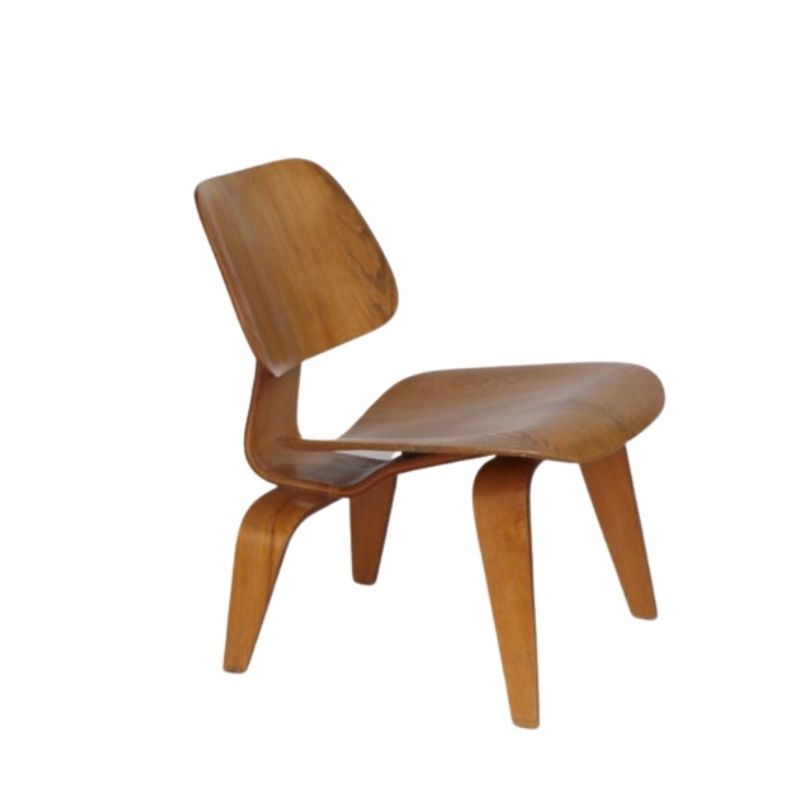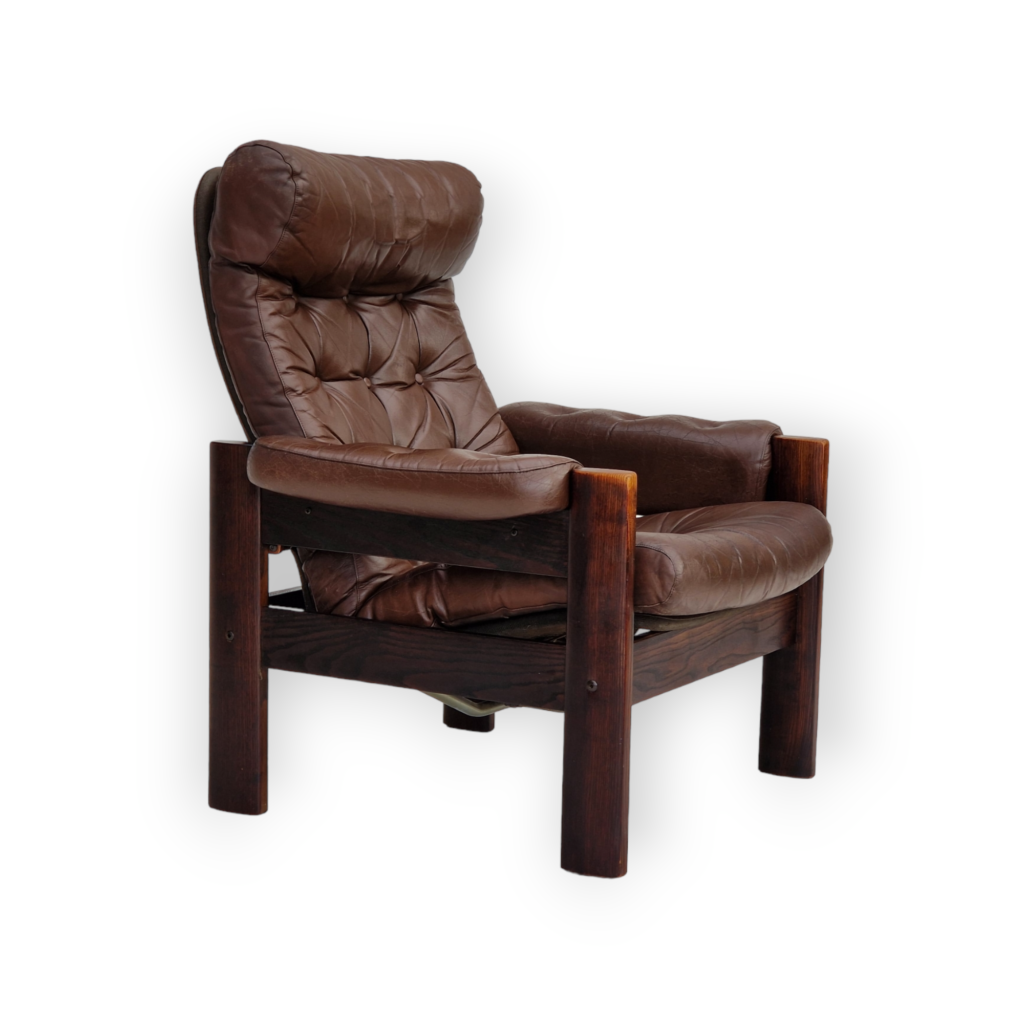Very Interesting article and...
Very Interesting article and discussion. Thanks M.Andersen.
Almost a year ago I read another related article, since then I wanted to post it, and here is a good chance to do it.
This older article would be useful as an introduction, and explain somethings.
I find the first one posted by M.Andersen very clear WHY is American design where it is, and what to do, that's what I think Koen also did, suggest some routes.
By the way, as ALICE RAWSTHORN, the author of the article, said, as non Americans, it's a bit difficult to say somethings. [Them could be read as personal attacks... 😉 ]
Here is the article:
Dearth of a Nation
WHERE HAVE ALL THE GREAT AMERICAN DESIGNERS GONE?
BY ALICE RAWSTHORN
First, a confession: I?m British. And now a warning ? the theme of this column is what?s wrong with American design, so if you don?t like the idea of a foreigner whining about that, stop reading right now.
http://www.nytimes.com/indexes/2008/03/16/style/t/index.html#pagewanted=...
gustavo...
Here is the problem with argument at the core of the article.
Is it reasonable to expect Americans to dominate, or even rank as equals in, everything they try all the time?
The author admits that the only part of design in which Americans do not either rank highly, or dominate outright, is furniture design.
The vastly more interesting question would be: why do Americans rank highly, or dominate, so many design fields?
We are a mongrel country.
We Americans often have crude tastes.
Our economy has been utterly hollowed out by by our own oligopolies outsourcing of jobs overseas.
We are held financial hostages by a central banking cartel.
Our government was high jacked for eight years by a Texas oil junta that wrended our Bill of Rights.
We are fighting ridiculous wars for oil and strategic control of central Asia to prevent a Trans-Eurasian alliance from forming that could easily marginalize USA, North America, South America, and Africa.
Our primary and secondary schools are at their all time nadirs of performance.
How can a country not even quite as big as the EU dominate so many fields of design?
For a short while I thought..
..a few hours would be enough to comment on DCWilson's early remark...Now dear DC you are giving me enough material to comment on for the next year?I just can't keep up. On your latest series of comments I would like to add a very general comment: Design and design management are not the same thing. Chris Bangle certainly is a good communicator and manager. He knows how to motivate the troops, but to use his years at BMW as a example of American design dominance is a stretch. Steve Job certainly has done a great job in positioning Apple but the design was early on done by Helmut Eslinger, a well schooled German designer that in the early Apple years had both an office in Germany and the U.S. called Frog design..etc. etc. Before trying to formulate an answer one side note: we "Canadians" are not in a position to respond to any U.S. attempt to integrate North America and claim the North Pole as the last star on the U.S.flag, but you might re-think your position. Over it's history Canada has welcomed quite a number of their southern neighbours, loyalists, draft dodgers, Bush refugees, you name them. By being a different country and being able to value the Canadian dollar at the most convenient rate for import of oil, natural gas, wood, aluminium, gold, silver and more recently diamonds, you have created and control a cheap supplier of those materials just north of your peaceful border. You might want to keep it that way.
Back to design. In my humble opinion, not just U.S. design is in trouble; all design is on a strange slippery surface. In it's most elementary form, design is to use both research and creativity in order to identify a real or perceived need and to propose a solution within the technological and cultural context in which the product will be produced and used. Any product is at the start a kind cross road in virtual space between function, technology and culture. Leave any of these elements out or miss the target with one of them and you have created a failure. Of course we would love if design was this simple. But all three elements are evolving continuously. Not only are they evolving but the activity of design itself is making them move?or should change them. For instance, one can not just base a design on an available technology, because in the process of researching the culture of the product and it's function the designer is going to discouver good reasons innovate in technology in order to better serve a particular function or to make the product fit better into it's own culture. The same can be said about changing the culture thanks to technology or changing the function thanks to technology etc.
My perception is that, with the exception of the technology driven electronic industry to much design is done without one of these three engines.
cont.
Too much design is not culture driven (other than the personal culture of designer), too much design does not take into account the technology that is available and does not translate new technology in "humane" form. Too much design is done without a deeper understanding of the real functions of the product, and not just the primary functions, but also the secondary, the emotional, the social status functions etc.
Is this typical for the U.S. certainly not, quite a number of countries are suffering of the same problems. Even successful "design" countries live on substantial life support. Wether it is called VIA in France or the many names under which Holland pumps about 100 million Euro's into Dutch design promotion every year ( translated roughly into U.S.$ and the size of the U.S. that would be $ 1 600 000 000 per year. It all indicates to me that we designers are often off target in our search for those elusive points where culture meets technology and function.
Koen...
Shit! You make it seem so easy to distill brilliantly.
Let me express it as a book title. 🙂
"Design at the Nexus: Function, Technology, and Culture in Design"
I want to throw legacy in there some how, but screw it! Let it be implied as the evolutionary dimension of each of the three categories.
Maybe, I should be more explicit..
...about the directions in which I see a brighter future in design. If we accept that either culture, technology or function (in the largest sense) are the engines of evolution in design, designers should concentrate on finding and exploring the new elements in one or more of these areas. In the case of technology there are of course the giant steps taken in electronics. Typical for the area is that the industrial designer does not play the same important role as in traditional products. Interface designers and engineering is often seen as more important, and rightly so, I think because the service rendered by the product is the electronic function and the interface. It does not mean that there is no role for the designer in the interface, but it always takes some time before we put the new product into it?s proper context. The wonderful Braun calculator, with finger size buttons and a limited amount of mathematical functions was not the first electronic calculator (the first real small size was the 1972 Sinclair executive) It came about after a period of explosive development of the calculator and a multiplication of the number of mostly useless buttons and functions. It is not unlike new toys at Christmas. In the beginning there does not seem to come an end to the use of the new toy until it finds it's own place and enters the proper hierarchy in the toy box. Passed this period it is used less and at suitable times. All our electronic expansions will go the same way, abuse in the beginning and proper integration into our daily lives afterwards. But what about other technology, what about nano-materials, composites etc.. Composites are an interesting area from quite a number of points of views and yet, we see very little use of it by young designers. Yes there are some well known examples, but often they distinguish themselves by the same mistake. Most often they are spectacular demonstrations of the characteristics of the material. Very light carbon fibre chairs for instance. But they do not do what design should do, which is to translate the new technology into the existing culture, in other words they have found the right meeting point between function and technology but are completely outside the main or even marginal culture. The basic mistake is that the designer over-estimates the capacity of the product to change the culture. A better example is the introduction of the same carbon fibres in the sport goods, where it seems to be adopted without any major problems (sometimes you hear about a fisherman, electrocuted because he ignored that carbon fibres are a good electrical conductor) Designers should take notice and before making chairs, they should learn from how easy carbon fibres entered the golf course, the fishing rods etc. No-one in those application did see the carbon fibre as an intrusion into an established culture, but as a compliment to the performance within the culture, why can't we do that in furniture?
next...
Looking at culture, we see an enormous effort; actually almost 100% of the design effort goes into exploring products that could be part of a new culture. Most of the products that attract attention on the design magazine pages are not innovative from a technological point of view. Sometimes they might pretend, by claming features that escape the attention of most design journalism. Nor do they explore a higher level of functionality. Sometimes it is bewildering how knowledge about function is actively ignored. I have a hard time finding a chair designed in the last decade that includes any of the ergonomical or anthropometric considerations and findings that have been accumulated in the last 30 years. Ignoring them as actively as possible has indeed become the new standard for contemporary design. There might be good reasons why this generation of designers prefers to concentrate on the cultural aspects of design. One of those reasons was the core of the post modern discourse: Modernism had ignored the popular culture. Modernism was elitist and should have learned from Las Vegas. Modernism had overlooked the semiotics of form; modernism had internationalist ambitions where culture is specific and regional, etc. etc. So?are we exploring the possibilities of being less elitist, are we inclusive and integrating popular form into contemporary design, are we truly looking at the symbolic value of form, other than by gold plating?
Are we expressing the values, both aesthetic and moral that make groups of users different and specific?other than rich and snobbish? All of these areas need to be explored, can be explored and should be. What we see is the emerging of an effortless search in all other directions than the most urgent ones. Is it surprising that so many sensitive people, people that care about the quality of their surroundings, have turned back half a century en only show a token interest in what designers are doing right now (read 95% of DA). I do not deny or minimalise the role design has in contributing to the advancement of culture. Yes, we have the task in society to pull the rope, to use an analogy, that makes the culture move forwards. But, to continue the image, the goat on the other end of the rope has untied itself and is looking for other pastures?no wonder, pulling seems to be so easy and so aimless. In too many areas, we have created an artificial culture. The U.S. car industry is a good case in point.
cont.
Designers within that culture have not only contributed to it's aimless development they have even contributed to keep the critics away, not only by stating that the care industry was a different world from other consumer products, but by confirming it in specific design educations. We know the results, they have been pulling so long in the wrong direction that they have no clue anymore of where the goat is! Living in a closed culture were cars are always on the top of everyone?s mind, they failed to see that their market was more and more disillusioned by the high cost, the endless growing amount of useless accessories etc. No matter the sector in which we are working, we can not design from within a closed self-sufficient little professional world. We have to start looking for the goat.
Good stuff.
Perhaps we could look at the Herman Miller Aeron Chair. Will it one day capture our attention and admiration as the Eames Lounge does today ? If so, why ?
And why is it already so sought after, by a segment of the market today ? There are imitators, there are banner ads and little ads in the backs of major magazines; clearly it continues to be a "hot" item. Did it not take current new technology, and ergonomic issues, and make of them a cutting-edge product ? Is it a rare example of what Koen sees as missing in the furniture segment ?
As for cars, I can point to one forward-thinking group who have taken the car apart and re-thought it, as a weight-saving and lean-manufactured composite structure. There is (or should be) questions as to the power source chosen to mate with this body shell, but at least barriers are being broken. See the link below.
Assuming that both the Aeron Chair and the Hypercar are viable examples of where we ought to go, what is the difference between them, which makes one a household word and the other a virtual unknown, despite years of attempts at publicity ?
http://www.rmi.org/sitepages/pid191.php
"What's the difference"? Seriously?
Maybe part of the difference is that one's been in production for 15 years and has made hundreds of millions of dollars for its manufacturer, while the other has spent the same amount of time as nothing more than an artist's rendering on a web page.
The Aeron Chair by Miller...
was feasible, because there was no global oligopoly producer market with vast sunk costs in other chair technologies triggering it to resist the kind of shift in design that the Aeron represented and would trigger.
The Aeron also solved an immediate and sharply felt need of many people to spend more time in a chair in front of an desktop computer connected online. Sit in the Aeron. Feel instantly better longer. Also get status. This is a strong combination.
The Hypercar solves problems that trigger massive destabilization of a long existing oligopoly producer market. It represents a constellation of new technologies that would massively destabilize a constellation of existing oligopoly producer markets. Therefore, it languishes.
The mistake companies like Hypercar make is they act as if new technology superior by orders of magnitude can overcome the costs of technological change. They overlook institutional stickyness that is in place and perpetuating the status quo. They underestimate the synergy between sticky institutions and an oligopoly's aversion to writing off enormous sunk costs.
cont...
But even more basic than the above is this: sell to the masses eat with the classes. sell to the classes, eat with the masses.
Hypercar/Fiberforge is creating enormously expensive technology in production processes that require enormous capital sinking to produce for the vast markets they serve. And there are only a few buyers in the oligopoly; that's rather limited and collusive demand. And even if Hypercar/Fiberforge open source the technology, it does not drastically increase the number of firms sufficiently capitalized to deploy the hypercar technology. Put another way, it is less risky to collude and not deploy Hypercar/Fiberforge's new technology, than it would be embrace the new technolgoy. So Hypercar/Fiberforge, relatively speaking, eats with the masses, because it sells to the classes of auto production. And it will continue doing so unless and until it can develop some technology that it can sell straight to the masses, or some technology that does not threaten the sunk costs of the auto producer oligopolies.
The best thing any designer could do would be to design a widget that vaporizes enormous sunk costs and so enables firms to embrace new technologies.
But wait, this widget has already been designed.
The widget is called war.
Killing off competitors with your military force greatly reduces the risk of writing off sunk costs and starting anew. War also eliminates those players that you owe too much money, or that owe you too much money to ever be repaid. War allows debt write-off greatly reduced risk...especially once the war has been won.
Most war is about debt restructuring and trade imbalances and perpetuation of technological advantage. Political ideology is simply the tool used to energize a political base required to pursue war that is necessary for debt restructuring.
Induced depressions and induced stagflations that wipe out vast amounts of wealth, and trigger vast debt write-offs, are another way to clear the decks of inhibiting sunk costs.
Frankly, building an Aeron chair is like building hoola hoops in comparison to building cars.
If you need any help, please contact us at – info@designaddict.com









